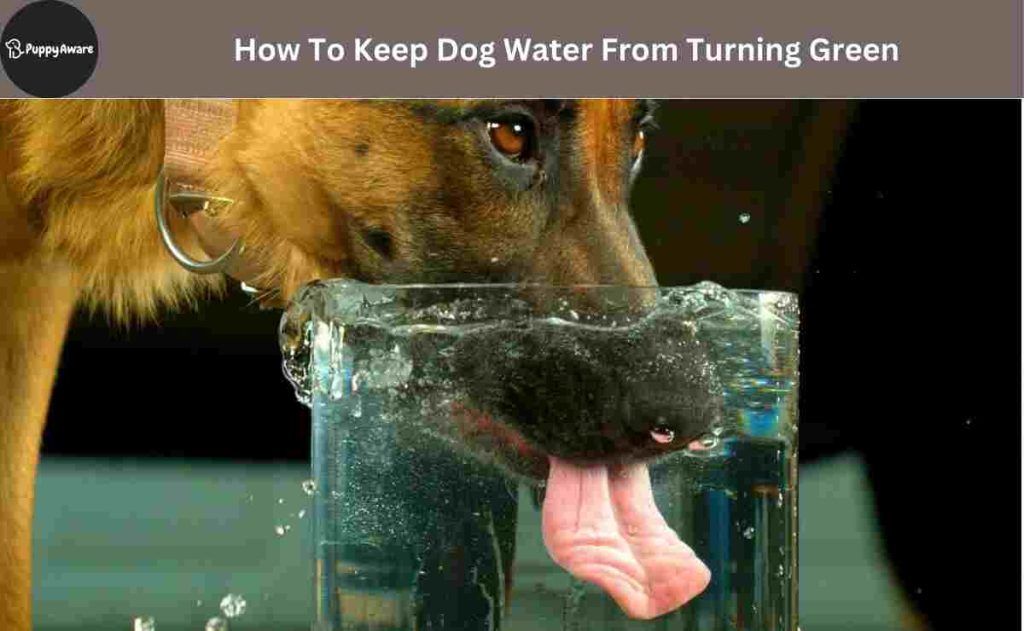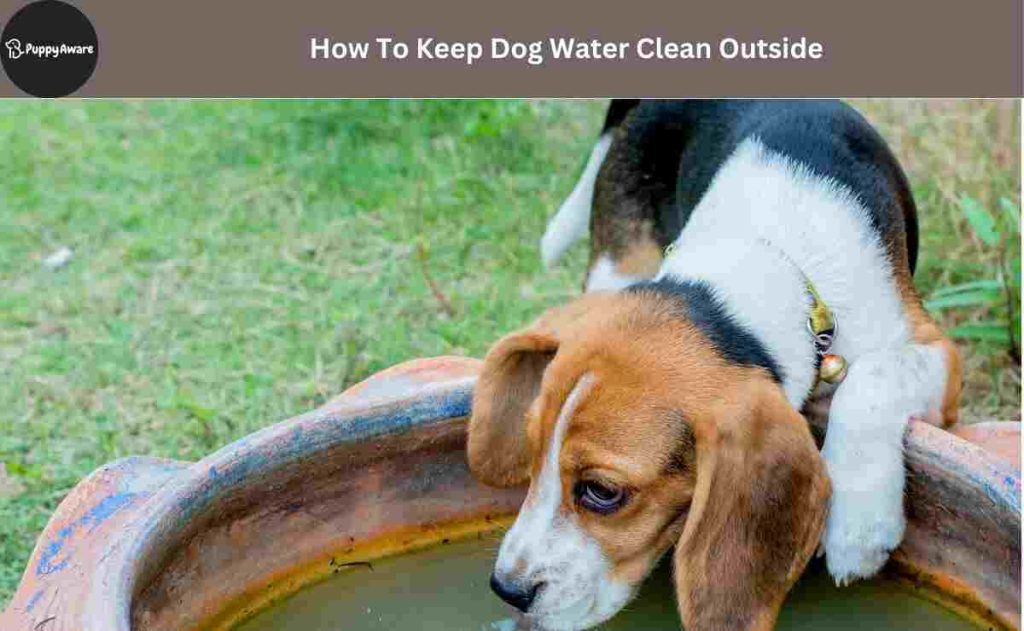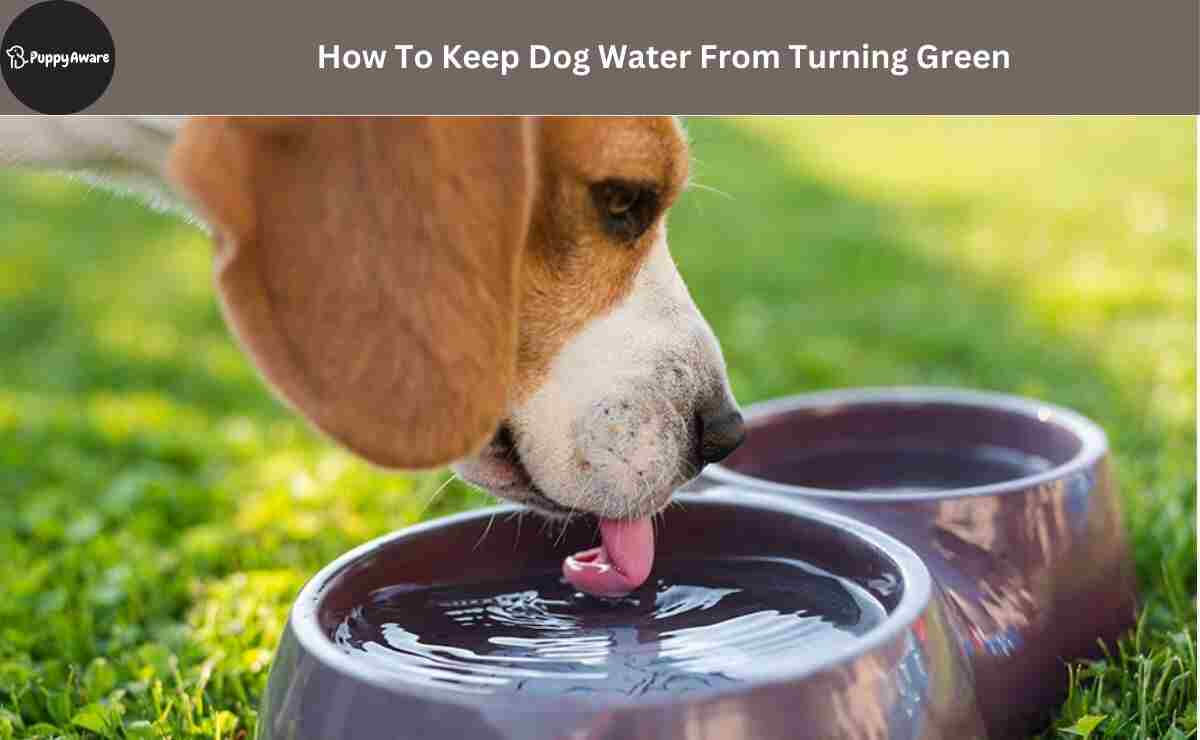Every responsible dog owner best tries to provide nutritious food and clean water to their dogs. During summer days, the water bowl of dogs often turns green. The growth of algae is the main reason for this situation.
It looks dirty and you should not allow your dog to drink that green water. To keep your dog’s water from turning green, you need to understand the causes and take appropriate measures to prevent it. This post is gonna help you.
Why Does Dog Water Turn into Green?
Algae is a plant-like organism that can take root in different conditions like your dog’s water bowl. They play a vital role in the environment by contributing significantly to Earth’s oxygen production but it comes as a hygiene issue when grown in dog water bowls. Because of the growth algae can adversely affect your dog’s health.
Several factors contribute to the proliferation of algae in the water bowl. If you place the bowl in direct sunlight, it can accelerate algae growth.
Algae require nutrients to flourish. When dogs drink water, some leftover food particles or organic matter mix in the water, providing the necessary nourishment for this plant. Also, bowl water is a standstill that lets algae grow faster.
The choice of material matters. Like plastic bowls are more susceptible to algae growth than stainless steel or ceramic alternatives.
How To Keep Dog Water From Turning Green?

The green color in the water usually occurs due to algae growth, which can be harmful to your pet if consumed. Fortunately, there are several steps you can take to maintain clean and fresh water for your furry friend.
- Change Water Regularly
First, make sure to clean your dog’s water bowl regularly. Bacteria and other organic matter can accumulate in the bowl over time which is a perfect condition for algae growth.
So you should wash the bowl at least once a day using a mild detergent and warm water. Scrubbing the bowl with a brush will help remove any residue or debris, inhibiting the growth of algae.
- Keep the Water Bowl In a Shaded Area
Sunlight helps the growth of algae. So if you keep the bowl away from direct sunlight, it can help prevent the water from turning green. If moving the bowl is not feasible, you can also use a cover or canopy to provide shade and protect the water from sunlight exposure.
- Filtration System
Another effective method is to provide your dog with a water bowl that has a built-in filtration system. These bowls are designed to filter out impurities and maintain clean water for a longer period. Look for bowls with activated carbon filters, as they are particularly effective in removing odors and contaminants from the water.
- Use Additives
Lastly, consider using additives that are specifically designed to prevent the growth of algae in pet water bowls. These additives are safe for dogs to consume and work by disrupting the growth cycle of algae. Follow the instructions provided by the manufacturer to ensure the correct dosage is added to the water.
- Select The Right Bowl Material
Choosing the correct material for your dog’s water bowl is also important. To steer clear of algae-related issues, avoid using plastic bowls. It is porous and can get scratched easily, creating an environment where algae can grow.
It is safer to use stainless steel or ceramic bowls rather than plastic bowls since they are less likely to harbor bacteria or algae. This type of bowl is easy to clean, durable, and rust-resistant.
Are Algae in The Water Bowl Harmful for Dogs?
Many dog owners notice algae growth in their dogs’ water bowls. It is true that some types of algae can be toxic to dogs if consumed, but not all algae are harmful to them. Dog owners need to be aware of the potential risks associated with algae.
Certain types of algae like blue-green algae, can produce toxins that are harmful to dogs. These toxins can cause a range of symptoms, including diarrhea, vomiting, weakness, difficulty breathing, and even death in severe cases.
If you notice any of these symptoms in your dog after they have consumed water containing algae, then it is sure that the bowl contains toxic plants.
Algae growth in the bowl can cause a few problems for dogs. Such as
1. Germs: Algae may contain tiny germs like E.coli and Salmonella. If your dog drinks water with these germs, it can give them stomach issues and other health problems.
2. Not Drinking Enough: Algae can change how the water tastes and smells, so dogs might not want to drink enough. This can lead to them not having enough water and getting dehydrated, which is really bad for their health.
3. Stomach Problems: If dogs drink water with algae, it can give them stomach problems like feeling sick and having runny poop. Making sure the water bowl is clean helps stop these stomach issues.
4. Allergies: Just like people, dogs can be allergic to certain types of algae. If they touch or eat these algae, it can make them itch, give them skin problems, or make it hard for them to breathe.
Are There Any Natural Ways to Prevent Algae Growth?
There are various methods available to prevent and remove algae, but it is always beneficial to try natural alternatives.
Cleaning the water bowl on a regular basis with a gentle, non-toxic cleaner can help remove any existing algae and prevent new growth. This is the most effective way.
Adding natural additives to the water can be effective in preventing algae growth. For example, adding a small amount of vinegar or lemon juice to the water can create an environment that is unfriendly to algae.
Though there is no foolproof method to completely prevent algae growth in a dog water bowl, you can employ these natural techniques to significantly reduce the chances of its occurrence.
How To Keep Dog Water Clean Outside?

Dirt, debris, algae, etc. can contaminate your dog’s water outside, which is one of the challenges of keeping it clean. There are a few strategies you can follow:
Try to keep it in an elevated position to prevent it from sitting directly on the ground where it can collect dust and dirt. You can use a raised platform or a specially designed water bowl stand.
Secondly, invest in a high-quality water bowl that is designed for outdoor use. Look for bowls with a built-in filter or a cover to keep out insects, leaves, and other debris. Some bowls even have a water filtration system to ensure that the water remains clean and fresh.
Regular maintenance is also crucial for keeping your dog’s water clean outside. Empty and refill the water bowl daily to prevent any bacterial growth. Consider using a brush to scrub the bowl periodically, especially if you notice any algae or mold growth.
Lastly, monitor the water bowl throughout the day and replenish the water as needed. In hot weather, the water can evaporate quickly, so ensure that your dog always has access to a sufficient amount of clean water.
Conclusion
Using the mentioned techniques, you can effectively prevent your dog’s water from turning green. It also ensures that the water remains clean and fresh for dogs and puppies to drink. You should provide clean water to your pet to maintain their health.
Also, it is advisable to avoid letting your dog drink from bodies of water, such as ponds or lakes, where algae growth is common. These bodies of water can contain high concentrations of harmful algae, putting your dog at a greater risk of toxin exposure.
Also Read
